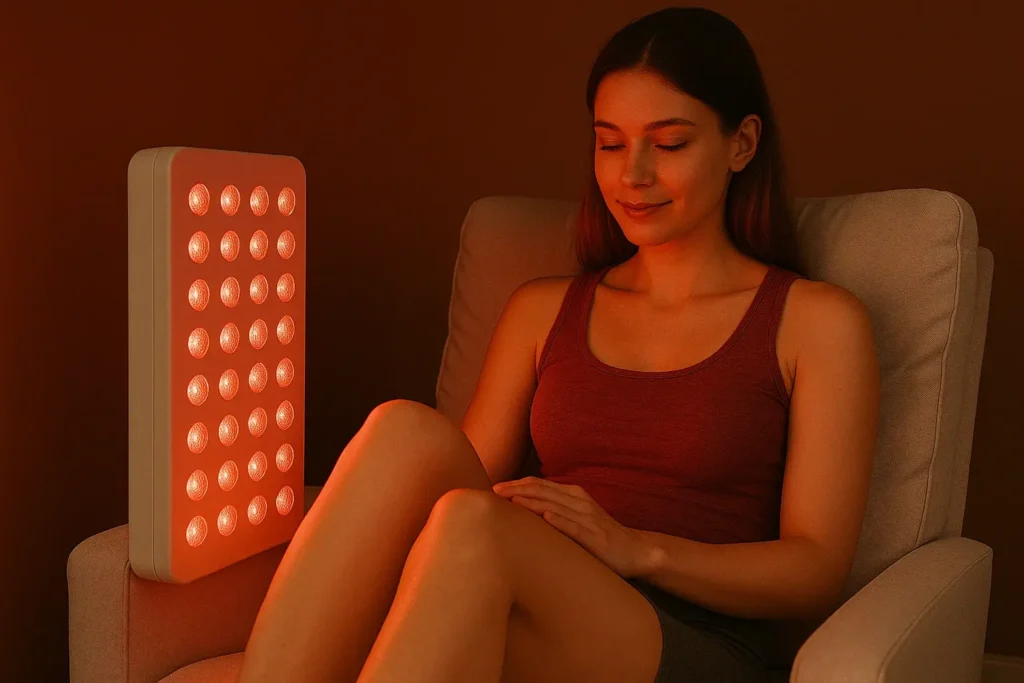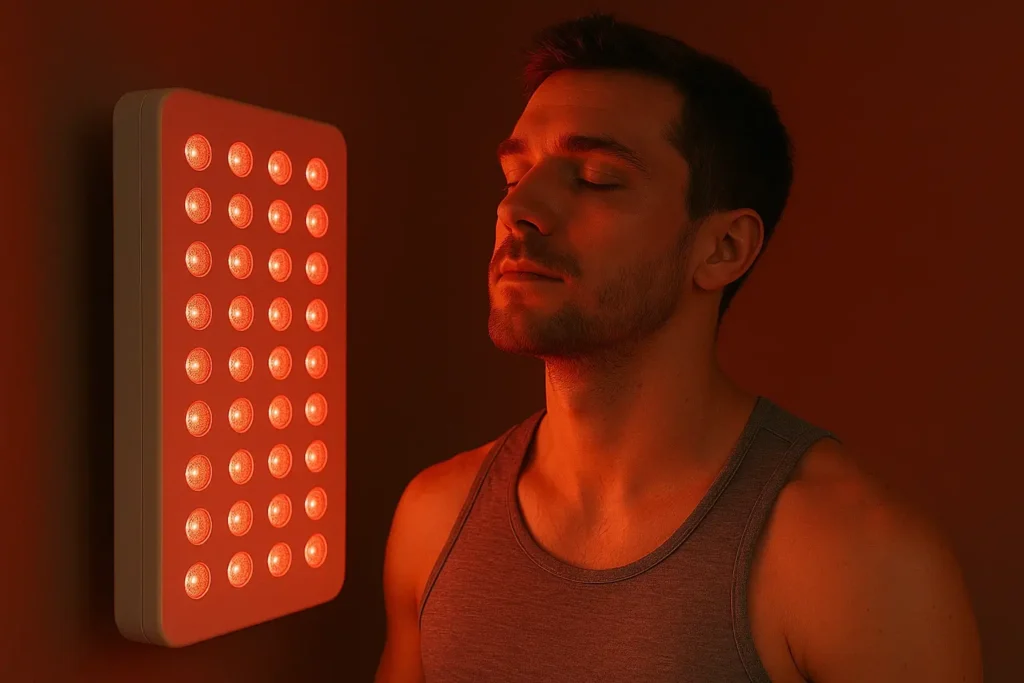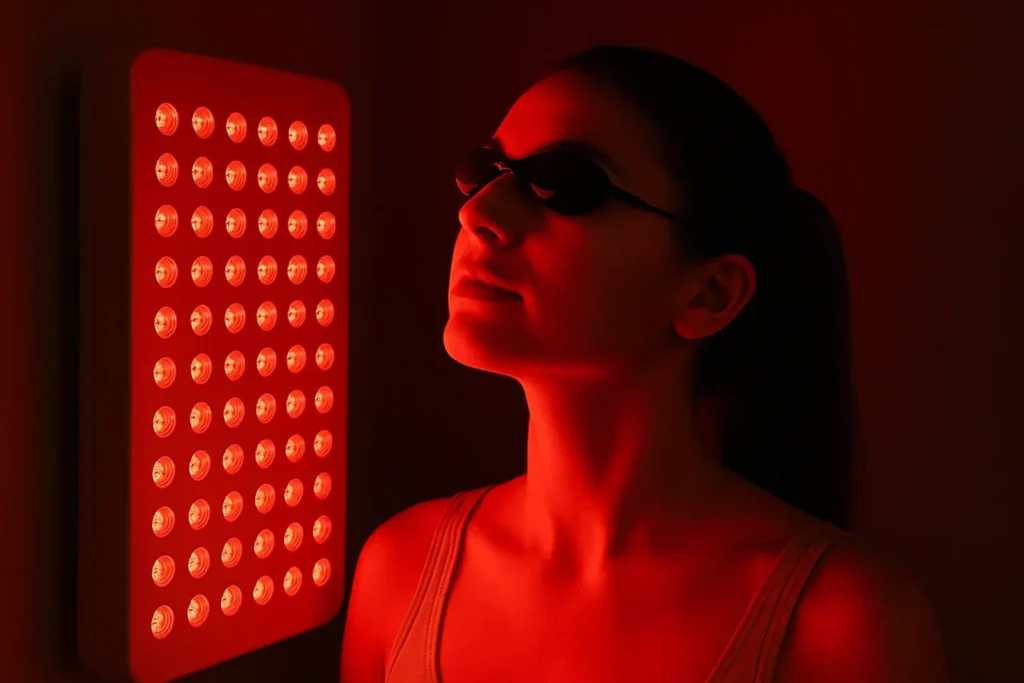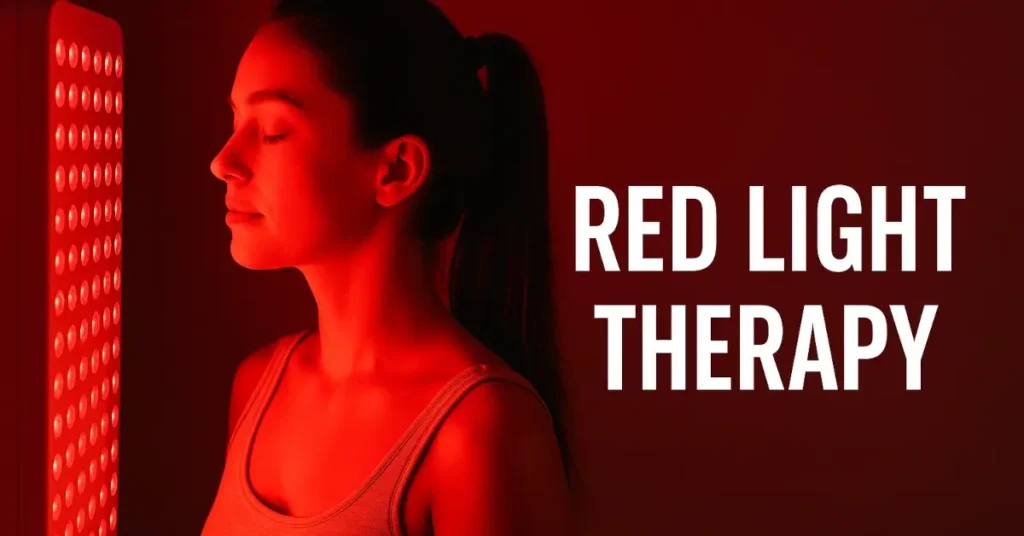Red light therapy (RLT), also known as photobiomodulation (PBM) or low-level laser therapy (LLLT), has gained increasing popularity in recent years as a non-invasive treatment that uses low-wavelength red or near-infrared light to promote healing, reduce inflammation, and enhance overall health. From athletic recovery to skin rejuvenation, red light therapy is touted as a solution for numerous conditions—but what does the science actually say?
This comprehensive guide examines the research, mechanisms, benefits, and safety of red light therapy. It aims to provide authoritative, science-backed answers to the most common questions surrounding this promising modality.
What Is Red Light Therapy?
Red light therapy involves exposing the body to specific wavelengths of red and near-infrared light (typically between 600 to 1000 nanometers). These wavelengths penetrate the skin and reach the underlying tissues, stimulating cellular activity, particularly in the mitochondria.
The process triggers biological effects that may include increased ATP production (adenosine triphosphate), reduced oxidative stress, and improved blood flow—each of which contributes to the healing process [1].

How Does Red Light Therapy Work?
The primary mechanism of red light therapy centers around mitochondrial stimulation. Mitochondria are the energy factories of the cell, and when exposed to red or near-infrared light, they become more efficient at producing ATP.
One theory suggests that red light interacts with the enzyme cytochrome c oxidase (CCO), an essential component of the mitochondrial respiratory chain. This interaction enhances electron transport, improving mitochondrial efficiency and energy production [2].
Additionally, red light therapy may:
- Promote gene expression involved in healing
- Modulate inflammatory markers
- Stimulate fibroblast activity (important for collagen production)
- Enhance tissue repair and regeneration [3]

Scientifically Supported Benefits of Red Light Therapy
1. Wound Healing and Tissue Repair
Numerous studies have shown that red light therapy can accelerate wound healing and tissue repair by enhancing cellular function and promoting angiogenesis (formation of new blood vessels) [4].
2. Skin Health and Anti-Aging
Red light therapy has demonstrated positive effects on skin tone, texture, and collagen density. A randomized controlled trial published in Photomedicine and Laser Surgery found significant improvements in wrinkle reduction and overall skin appearance following RLT [5].
3. Pain and Inflammation Reduction
RLT has been widely studied for its ability to reduce inflammation and alleviate chronic pain, particularly in conditions like arthritis, tendinitis, and temporomandibular joint disorders (TMJ). A systematic review in The Lancet concluded that low-level laser therapy was effective for neck pain relief [6].
4. Muscle Recovery and Performance
Athletes increasingly use red light therapy to enhance performance and speed up recovery. Research in the American Journal of Physical Medicine & Rehabilitation found that pre- and post-exercise RLT improved muscle strength and reduced post-exercise soreness [7].
5. Hair Growth Stimulation
RLT has been found effective in stimulating hair regrowth in individuals with androgenetic alopecia. A double-blind, sham-controlled study demonstrated increased hair density with consistent use of near-infrared light therapy [8].
6. Cognitive Function and Brain Health
Preliminary research suggests that near-infrared light may improve cognitive performance and reduce symptoms of neurodegenerative diseases by enhancing cerebral blood flow and mitochondrial activity in neurons [9].
7. Sleep Quality and Circadian Rhythm Support
Emerging studies indicate that red light therapy may positively influence melatonin production and circadian rhythm regulation. This can be especially beneficial for individuals experiencing jet lag or shift work-related sleep disturbances. A study in the Journal of Athletic Training showed improved sleep quality and endurance performance in athletes using RLT [11].
8. Thyroid Health and Hormonal Balance
Some clinical studies have reported beneficial effects of red light therapy on thyroid function, particularly in individuals with hypothyroidism. RLT may help reduce thyroid antibody levels and improve T3 and T4 hormone balance when applied directly to the neck area under clinical guidance [12].
9. Joint Health and Osteoarthritis
A number of controlled trials have found that red light therapy can significantly improve joint stiffness, pain, and range of motion in individuals with osteoarthritis. These benefits are largely attributed to enhanced cartilage regeneration and reduced inflammation [13].
Is Red Light Therapy Safe?
Red light therapy is generally considered safe when used properly. Most clinical studies report no adverse effects, and side effects—if any—are typically mild and temporary (e.g., slight skin redness or dryness).
However, it’s important to:
- Avoid looking directly into the light
- Use devices according to manufacturer guidelines
- Consult a medical provider if you have a condition that may affect light sensitivity (e.g., lupus, epilepsy)
According to the Journal of Photochemistry and Photobiology B: Biology, RLT has an excellent safety profile when used within therapeutic ranges [10].
Common Applications of Red Light Therapy
- Dermatology: Acne, eczema, psoriasis, wound care
- Sports Medicine: Muscle strain, joint inflammation, faster healing
- Rheumatology: Arthritis, fibromyalgia pain management
- Neurology: Traumatic brain injury, cognitive support
- Aesthetics: Anti-aging, scar reduction, skin firming
- Endocrinology: Thyroid support, hormone regulation
- Sleep & Recovery: Melatonin regulation, sleep optimization
Home Devices vs. Clinical Treatments
Consumers now have access to a wide variety of at-home red light therapy devices. While clinical-grade devices used in medical settings offer higher power output and larger treatment areas, many home-use devices are FDA-cleared and effective when used consistently.
When choosing a red light therapy device:
- Ensure it operates within the 600–1000 nm wavelength range
- Look for third-party testing or FDA clearance
- Consider irradiance (power output) and treatment area size
Red Light Therapy FAQs
How often should I use red light therapy?
Most studies recommend 3–5 sessions per week for optimal results, especially during the initial 4–6 weeks.
Can I combine RLT with other treatments?
Yes, RLT is often used in conjunction with physical therapy, dermatological treatments, or skincare routines.
Is red light therapy the same as UV therapy?
No. RLT does not emit UV radiation and does not cause sunburn or increase skin cancer risk.
When will I see results?
Results vary based on the condition being treated but often appear within 2–8 weeks of consistent use.
Is red light therapy suitable for pets?
Veterinary applications of RLT are growing, particularly for pain relief and wound healing in dogs and horses. Always consult with a veterinarian first.
Can RLT help with seasonal affective disorder (SAD)?
While traditional light boxes use bright white light, some early evidence suggests near-infrared therapy may help alleviate symptoms of SAD by modulating serotonin levels.

Conclusion: Should You Try Red Light Therapy?
With a growing body of scientific evidence supporting its efficacy, red light therapy is more than just a wellness trend. It’s a versatile, non-invasive treatment option backed by decades of research and growing clinical adoption.
Whether you’re looking to reduce inflammation, recover faster from workouts, enhance your skin, improve sleep, or support cognitive function, red light therapy offers a safe and scientifically supported path toward better health.
Consult your healthcare provider before starting red light therapy—especially for chronic conditions—and choose quality devices with clinically backed specifications for best results.
Comparing Red Light and Near-Infrared Light
Red and near-infrared (NIR) light have different tissue penetration depths and therapeutic effects. Red light (600–700 nm) is primarily absorbed in the skin, making it effective for treating surface conditions like acne, wound healing, and wrinkles. NIR light (700–1000 nm), on the other hand, penetrates deeper into muscle, connective tissue, and even bone, making it suitable for neurological and orthopedic applications.
A study published in Lasers in Surgery and Medicine found that NIR wavelengths demonstrated significant benefits for reducing inflammation and enhancing recovery in deep tissues, while red light was more effective in superficial applications [14].
Red Light Therapy and Mental Health
Emerging studies suggest that red light therapy may have antidepressant and anxiolytic effects. Near-infrared light, in particular, can penetrate the skull and reach brain tissue, influencing mood-related pathways. Transcranial photobiomodulation (tPBM) has been studied for its effects on depression, anxiety, and traumatic brain injury.
A randomized, double-blind study in Behavioral and Brain Functions showed that tPBM improved mood and reduced anxiety in healthy individuals after just a few sessions [15]. These effects are believed to be mediated by increased ATP production in neurons and enhanced cerebral blood flow.
Red Light Therapy and Metabolism
There is growing interest in how red light therapy affects metabolism, fat reduction, and body composition. RLT may stimulate the release of nitric oxide, improve mitochondrial function in adipocytes (fat cells), and enhance insulin sensitivity.
A clinical study published in Obesity Surgery found that patients who underwent low-level laser therapy alongside diet and exercise had a greater reduction in waist circumference compared to a control group [16].
Supporting Immune Function
Red light therapy also appears to modulate immune response. Photobiomodulation has been shown to influence macrophage polarization, increasing the activity of anti-inflammatory (M2) macrophages while reducing pro-inflammatory (M1) phenotypes.
According to a review in Frontiers in Immunology, low-level light therapy can enhance tissue repair and resistance to infections by optimizing immune system balance [17].
Best Practices for Red Light Therapy at Home
To maximize benefits and ensure safety, here are recommended best practices:
- Distance: Position the device 6–12 inches from the skin.
- Session Duration: 10–20 minutes per treatment area.
- Frequency: 3–5 sessions per week for the first 4–6 weeks.
- Skin Prep: Clean, dry skin improves light absorption.
- Eye Protection: Use goggles if light exposure is near the eyes.
Always follow the manufacturer’s recommendations, and for therapeutic use in medical conditions, consult a licensed provider.
References
- Hamblin, M. R. (2016). Mechanisms and applications of the anti-inflammatory effects of photobiomodulation. AIMS Biophysics, 3(3), 337–361.
- Karu, T. (1999). Primary and secondary mechanisms of action of visible to near-IR radiation on cells. J Photochem Photobiol B, 49(1), 1–17.
- Chung, H. et al. (2012). The nuts and bolts of low-level laser (light) therapy. Annals of Biomedical Engineering, 40(2), 516–533.
- Gupta, A. et al. (2014). The efficacy of low-level laser therapy for chronic wound healing: A meta-analysis. Photomed Laser Surg, 32(9), 504–512.
- Barolet, D. & Boucher, A. (2010). Radiant near-infrared light improves skin tone and texture in patients with photoaged skin. Photomed Laser Surg, 28(2), 131–135.
- Chow, R. T. et al. (2009). Efficacy of low-level laser therapy in the management of neck pain: a systematic review and meta-analysis of randomized placebo or active-treatment controlled trials. Lancet, 374(9705), 1897–1908.
- Leal Junior, E. C. P. et al. (2010). Effects of phototherapy (low-level laser therapy) on performance and muscle recovery: a systematic review and meta-analysis. Am J Phys Med Rehabil, 89(11), 1076–1085.
- Avci, P. et al. (2014). Low-level laser (light) therapy for treatment of hair loss. Lasers Surg Med, 46(2), 144–151.
- Naeser, M. A. et al. (2011). Improved cognitive function after transcranial, light-emitting diode treatments in chronic, traumatic brain injury: two case reports. Photomed Laser Surg, 29(5), 351–358.
- de Freitas, L. F. & Hamblin, M. R. (2016). Proposed mechanisms of photobiomodulation or low-level light therapy. Photochem Photobiol B, 155, 301–309.
- Zhao, J. et al. (2012). The effects of red light therapy on sleep and endurance performance in Chinese female basketball players. Journal of Athletic Training, 47(5), 599–606.
- Höfling, D. B. et al. (2013). Low-level laser therapy improves thyroid function in patients with Hashimoto’s thyroiditis: a randomized placebo-controlled trial. Lasers in Surgery and Medicine, 45(7), 487–493.
- Hegedus, B. et al. (2009). The effect of low-level laser in knee osteoarthritis: a double-blind, randomized, placebo-controlled trial. Photomed Laser Surg, 27(4), 577–584.
- Khuman, J. et al. (2012). Near-infrared light therapy improves cognitive and motor function after traumatic brain injury. Lasers Surg Med, 44(8), 734–742.
- Schiffer, F. et al. (2009). Psychological benefits 2 and 4 weeks after a single treatment with near infrared light to the forehead: a pilot study of 10 patients with major depression and anxiety. Behav Brain Funct, 5, 46.
- Jackson, R. F. et al. (2012). The effect of low-level laser therapy on body contouring. Obes Surg, 22(4), 610–617.
- Tomé, D. et al. (2021). Immune-modulating properties of photobiomodulation therapy: A review. Front Immunol, 12, 667369.

